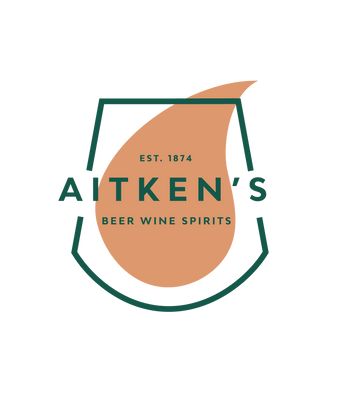Stift Klosterneuburg Winery
Vineyard
The wines for the Stift Klosterneuburg Winery come from legendary vineyards which are the pride and beating heart of the winery. These vineyards are located in the prime sites of Klosterneuburg, Vienna, Gumpoldskirchen and Tattendorf. There is variation in the soils and micro-climates of the four locations which make it possible for this ancient and influential producer to grow each variety in the terroir best suited to creating perfect fruit and beautiful wines.
Klosterneuburg. The vineyard in Klosterneuburg is fittingly called the “Stiftsweingärten”. The vines are all situated on south and southeast-facing slopes. The classical regional varieties Grüner Veltliner and Riesling are at home here on tertiary soils of weathered sandstone with loess and loam top soils. The wines develop intense, vibrant fruit and crisp acidity. The ripeness and aroma development of the grapes are greatly enhanced by the warm sunshine and the cool Viennese forest which regulate both temperature and humidity.
Gumpoldskirchen. The monastery’s vineyards are situated in the heart of the world famous white wine capital of the Thermenregion. Zierfandler (Spätrot) and Rotgipfler are two classic varieties that exhibit true greatness only in this region. The explanation for this lies in the unique terroir. The Anninger and Eichkogel mountains protect the vines from harsh weather and allow the sun to pamper the southeast-facing slopes of calcareous cambisol soils. All of this offers the ideal conditions for these rare indigenous varieties.
Tattendorf. The red wine village of Tattendorf lies 25 kilometres southeast of Vienna. Stift Klosterneuburg’s largest vineyard area is found here. This southern part of the Thermenregion is one of the greatest origins for Austrian red wines, in particular the abbey’s flagship variety St. Laurent. Grapes dependably achieve full physiological ripeness thanks to the warm and sunny Pannonian climate. The calcareous cambisol is enriched with abundant heat-absorbing alluvial gravel over mineral-rich subsoil.
Vienna. The abbey holds a significant portion of the classic Viennese vineyards at the foot of Leopoldberg and Kahlenberg in the Kahlenbergsdorf district. The south and east facing vineyards enjoy the warm, sunny Pannonian climate tempered by the Danube River. The weathered marine limestone offers ideal preconditions for the chalk-loving Burgundian grape varieties and for Gewürztraminer.
Winery
An extensive cellar from the Baroque period serves as the vinification facility at the Klosterneuburg Abbey. The vaulted cellar extends over four levels to a depth of 36 metres. State-of-the-art technologies are put to work for the production of high-quality wines in this historic venue. Prolonged, temperature-controlled white wine vinification highlights typical varietal aromas and fresh, crisp fruit.
Red wines are fermented warmer to enhance optimal extraction of colour and tannin. Minimal intervention is practiced after fermentation to preserve varietal, vintage, and single vineyard character of the wines. Maturation and storage take place in the four story vaulted cellar directly under the abbey.
Carbon Neutral
Conscientious use of natural resources has always been a central theme in their philosophy at Stift Klosterneuburg. They are now increasing their efforts and all steps of production in the entire winery have been analysed and improved according to their impact on the climate and environment. As a result they have now been certified as the first carbon neutral winery in Austria by the environmental protection pioneer “ClimatePartner”.
Every bottle of wine creates around 1.7 kg of carbon dioxide, which is about the equivalent of one cubic meter of gas. The central goal was to explore every possibility of minimizing carbon gas emissions. Numerous investments were made in the energy efficiency of the production methods. The energy for they winery comes from renewable sources and the heat created during fermentation and other processes is lead back into the circulation of energy. This has brought a huge energy saving in comparison with the average European winery. Because a zero-emission is not possible, they compensate for the small remainder of emissions with a climate protection project.
Sustainable cultivation and production methods of the Stift Klosterneuburg winery result in significant reductions in carbon gas emissions. They actively search for solutions through unconventional methods. For example, they are experimenting with keeping chickens between the vine rows, this helps because they loosen the soils and contribute to the reduction of weeds.
Greenhouse gas emissions are reduced wherever possible. The deep double-walled cellar of Stift Klosterneuburg does not require any additional air-conditioning for wine storage. The warmth created during fermentation and other processes is re-used by leading it back into the energy circulation system. They have their own biomass power plant providing the entire heating needs and delivering surplus energy into the network. Relying on local energy providers whenever possible helps to reduce transportation. Currently they are in the process of converting all of their tractors to biofuel.
All this as well as the winery manager Wolfgang Hamm keeping an observant eye on the life cycle analysis of all production methods and explains below...
“The protection of our existence begins with the small things. Sustainable production also means not wasting and throwing things away needlessly. We invest in long-term quality for our production, in things that will last. Environmental protection is a permanent process in our winery.”
Visit the Stift Klosterneuburg Website
Discover our Stift Klosterneuburg Wine Collection
Discover our delicious and wide ranging collection of Stift Klosterneuburg wines made in one of the oldest yet most progressive wineries in the world. If you're looking for a particular wine, please reach out to our team who'll be happy to help. Alternatively you can always explore our Wine Discovery Guide or Wine Collections for some inspiration.




